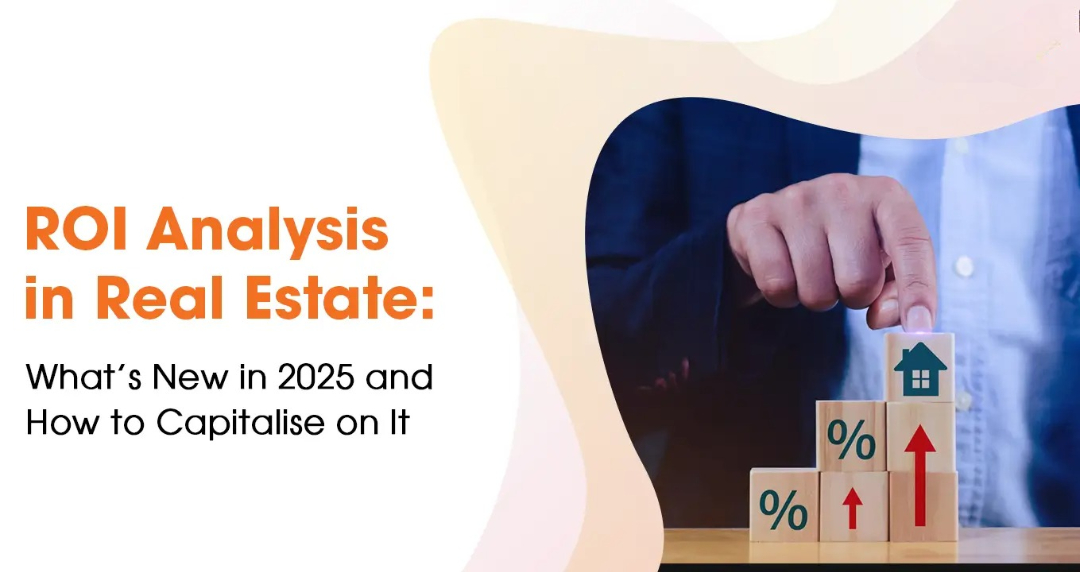The real estate market has long been a reliable avenue for building wealth, and in 2025, the landscape is evolving at an unprecedented rate. With new market trends, advanced technologies, and changing buyer preferences, investors need to rethink their strategies in order to maximize real estate returns.
In India, the sector is undergoing a transformative phase, driven by rapid urbanization, infrastructure development, and a growing demand for both affordable and premium properties. 2025 has been particularly crucial for cities like Jharkhand, where significant infrastructure projects and the rise of affordable luxury housing are creating exciting opportunities for both homebuyers and investors.
The Rise of Elegance: Exploring Affordable Luxury in Indian Real Estate
Leading developers and consultancy firms like 99Realty, are at the forefront of this change, delivering thoughtfully designed projects that enhance modern lifestyles and promise sustainable, long-term financial growth.
In this blog, we will explore the key factors influencing ROI in real estate, the emerging trends shaping the market in 2025, and strategies you can use to make smarter, future-ready investment decisions.
Understanding ROI in Real Estate
Before exploring the latest trends, let’s first clarify what is ROI in real estate. ROI, or Return on Investment, measures the profitability of an investment by comparing the total profit to the total investment costs. In simple terms, it indicates how much money you’ve earned compared to how much you’ve spent.
The basic formula for real estate ROI is:
ROI = (Current Value of Investment−Cost of Investment) ÷ Cost of Investment
For example, imagine you bought a real estate property for ₹50,00,000 and spent additional expenses of ₹2,50,000 for renovation and closing. You then sell this property for ₹60,00,000, then your ROI would be as follows:
Investment Gain = ₹60,00,000
Investment Cost = ₹50,00,000 + ₹2,50,000 = ₹52,50,000
ROI = (60,00,000 – 52,50,000) ÷ 52,50,000 = 0.1428 or 14.28%
There are several other ways to calculate ROI in real estate, depending on whether you are focused on rental income, appreciation, or overall profitability.
Cash Flow Method
The Cash Flow Return on Investment (CFROI) focuses on the property’s ongoing income versus the total capital invested. This method is ideal for rental properties, as it tells you how effectively your investment is generating cash each year.
Hidden Costs of Flats in India: Shocking Truth Buyers Miss
Formula:
CFROI = OCF ÷ Capital Employed
Where:
- Operating Cash Flow (OCF): Total rental income – operating expenses (like maintenance, property management fees, and taxes).
- Capital Employed: The total amount invested, including purchase price, legal fees, and renovation costs.
Example:
If your annual net rental income is ₹6,00,000 and your total investment is ₹50,00,000:
CFROI = 6,00,000 ÷ 50,00,000 = 0.12 or 12%
This means you earn a 12% annual return on your invested capital purely from cash flow.
Appreciation-Based ROI
This method is useful when you are planning to sell your property and want to factor in the rise in property value along with your rental income. It provides a more comprehensive view by combining cash flow and appreciation.
Formula:
ROI = [(Appreciation + Cash Flow) ÷ Total Investment] x 100.
Where:
- Appreciation: The increase in the property’s value since purchase.
- Cash Flow: Total rental income earned during the holding period, minus expenses.
- Total Investment: Purchase price + all additional costs (registration fees, legal fees, renovations, etc.)
Example:
If you bought a property at ₹50,00,000, the total investment was ₹52,50,000; your cash flow was ₹4,00,000 and then you want to sell it for ₹60,00,000
ROI = [(10,00,000 + 4,00,000) ÷ 52,50,000] x 100 = 26.66%
This indicates an overall return of 26.66% over the investment period.
Rental Yield
Rental Yield is a simpler and widely used metric for investors focused on rental income. It calculates the annual rental income as a percentage of the property’s purchase price.
Formula:
(Annual Rent ÷ Property Price) × 100
Example:
If a property was purchased for ₹50,00,000 and generates ₹4,00,000 annually in rent:
Rental Yield = (4,00,000 ÷ 50,00,000) x 100 = 8%
What’s Changing in 2025? Key Trends Shaping ROI
Here are a few of the main factors that are driving real estate returns in 2025:
Market Shifts & Affordability
The rising cost of living in Tier 1 cities has led homebuyers and investors to explore options in Tier 2 and Tier 3 cities. Affordable housing projects, supported by robust infrastructure and government initiatives, are emerging as high-growth zones. For instance, in the expanding suburbs of Ranchi, 99Realty have responded to this demand with well-designed, value-driven homes that appeal to first-time buyers and investors alike.
Homebuyers Supreme Court decision
PropTech & AI-Driven Insights
Artificial intelligence has transformed the way we predict return on investment. Property technology or PropTech platforms utilize digital tools, software, and AI to provide in-depth analysis of price trends, rental yields, and the growth potential of different areas. By leveraging these tools and platforms, investors can make decisions based on data rather than relying on the guesswork typically involved in traditional ROI calculations.
Artificial Intelligence in Property Management: A New Era for Jharkhand’s Real Estate
Sustainability & Green Buildings
Green and energy-efficient buildings are no longer limited to niche markets. Properties designed with eco-friendly materials and sustainable technologies are increasingly attracting tenants and commanding higher rental premiums. 99Realty has chosen such projects, helping the environment while enhancing long-term returns for investors.
Government Regulations & Tax Reforms
Several government policies and tax reforms have been introduced to help improve affordability, transparency, and investor confidence in the sector. These updates are particularly significant in rapidly growing cities like Jharkhand, where urban development and buyer demand are at an all-time high.
Real Estate in India: A Catalyst for Economic Growth and Impact of Govt Policies
Some of the key updates include:
- Revised Stamp Duty and Registration Fees: Several states, including West Bengal, have temporary reduced stamp duty for first-time homebuyers (which has been withdrawn now), making it easier for individuals and families to purchase their first property.
- Affordable Housing Incentives: Tax benefits on affordable housing projects encourage supply in this high-demand segment. Investors purchasing such properties also benefit from additional tax deductions on home loans under Sections 80EEA and 24(b).
- Green Building Tax Benefits: Properties certified as sustainable or energy-efficient now qualify for rebates on property taxes in select cities, including parts of Jharkhand. This encourages eco-friendly construction and increases the ROI over time.
- Simplified Capital Gains Rules: Streamlined processes for calculating and claiming capital gains tax exemptions have reduced administrative hurdles, helping investors reinvest profits more efficiently.
These reforms foster a more investor-friendly environment and make real estate transactions smoother and more transparent. By aligning with developers, who are up-to-date on regulatory changes, buyers can take full advantage of these benefits and avoid costly mistakes.
Rise of Alternative Investments
Alternative investment models, such as real estate investment trusts (REITs), fractional ownership, and co-living spaces, are opening doors for those who may lack the capital for a full property purchase. These options provide diversification and access to premium markets with lower upfront costs, making them increasingly popular among younger investors.
How to Capitalize on ROI Opportunities in 2025
Here are a few tips that can help you make good, well-informed decisions regarding real estate investments.
Invest in Emerging Markets
When exploring investment opportunities, focus on burgeoning areas where real estate developments are increasing. For instance, Jharkhand is experiencing a high demand for housing, especially for well-planned, mid-segment projects. Like 99Realty have recognized this trend and are responding to investors’ needs.
Leverage Data & AI Tools
Use modern PropTech platforms to research properties, track rental trends, and evaluate neighbourhood growth. Investors can better forecast ROI and mitigate risks by combining market data with professional insights from reputable developers.
Diversify Your Portfolio
Spread your investments across residential, commercial, and alternative assets like REITs. This diversification balances risk and creates multiple revenue streams, especially during economic fluctuations.
Focus on Long-Term Growth
Quick property flips are becoming less relevant. Instead, priorities sustainable developments in high-demand areas that promise consistent returns over time. Eco-friendly and community-focused projects increasingly seen as stable, future-proof investments.
Practical Investor Steps
- Conduct thorough due diligence on property titles, legal compliance, and market trends.
- Plan your finances carefully, accounting for all costs, including maintenance, taxes, and insurance.
- Work with trusted developers who offer transparency and guidance throughout the buying process.
- Stay informed about new government policies and technology trends that can impact your real estate returns.
Challenges in Measuring ROI in Real Estate
While opportunities abound, accurately calculating ROI can still be challenging. Here are some common obstacles investors face:
- Fluctuating Interest Rates: Rising or falling rates can directly affect mortgage costs and cash flow.
- Volatile Rental Demand: Economic uncertainty or shifting tenant preferences can lead to unpredictable rental income.
- Hidden Costs: Maintenance, taxes, and legal fees can diminish actual returns if not properly accounted for.
To overcome these challenges, collaborate with reliable consultancy firm like 99Realty, who provide clear breakdowns of costs and use conservative estimates in your ROI projections.
Conclusion
The real estate landscape of 2025 presents a wealth of opportunities for savvy investors willing to adapt and innovate. With advancements in data analytics, a growing emphasis on sustainable development, and the emergence of new investment strategies, the potential for significant returns is greater than ever. By harnessing AI-driven insights, diversifying portfolios, and committing to a long-term vision, investors can effectively navigate this dynamic environment.
Partnering with reputable firms like 99Realty will only enhance the investment experience and ensure a transparent and supportive journey towards building wealth. As we move forward, staying informed, flexible, and strategic will be crucial for success in the evolving market of real estate returns.
FAQs
What is ROI in real estate, and why is it important?
ROI, or Return on Investment, measures the profitability of a property. It helps investors compare opportunities and assess financial performance to make informed decisions.
What factors influence real estate returns in 2025?
Market demand, sustainability trends, government policies, financing costs, and technology adoption are the key factors shaping ROI this year.
How can I maximise my ROI in real estate this year?
Invest in emerging locations, use AI-driven tools, diversify across asset types, and choose reputable developers like 99Realty who focus on sustainable, high-quality projects.
Need Help?
Need help evaluating a property or planning your next move in the market?
Reach out to 99 REALTY – your trusted real estate partner for smarter choices.
Subscribe to get updates on our latest posts and market trends.






Join The Discussion